Peach trees are a great addition to any garden or orchard, providing sweet, juicy fruit that can be enjoyed all summer. However, the timing of planting is an important consideration in reaping the rewards of these trees. When is the best time to plant a peach tree? We have researched this question and have an answer.
The best time to plant a peach tree is in late winter or early spring. The tree is dormant throughout the winter, and planting it during this time will allow the roots to become established before the tree begins to grow in the spring.
Planting a peach tree at the right time will help its growth cycle get off to a good start. However, there are other things you need to consider when planting the tree. Keep reading to learn how to choose a planting site, how to grow the tree properly, and much more.
When Is The Best Time To Plant A Peach Tree?
In general, planting time for peach trees should be when the frost is over, and the soil has warmed up when the ground is already workable. You can plant them in late winter or the beginning of spring.
Planting the trees in summer is not recommended, as the heat can tress young trees. You should consider your local climate and the hardiness zone of your location before planting.
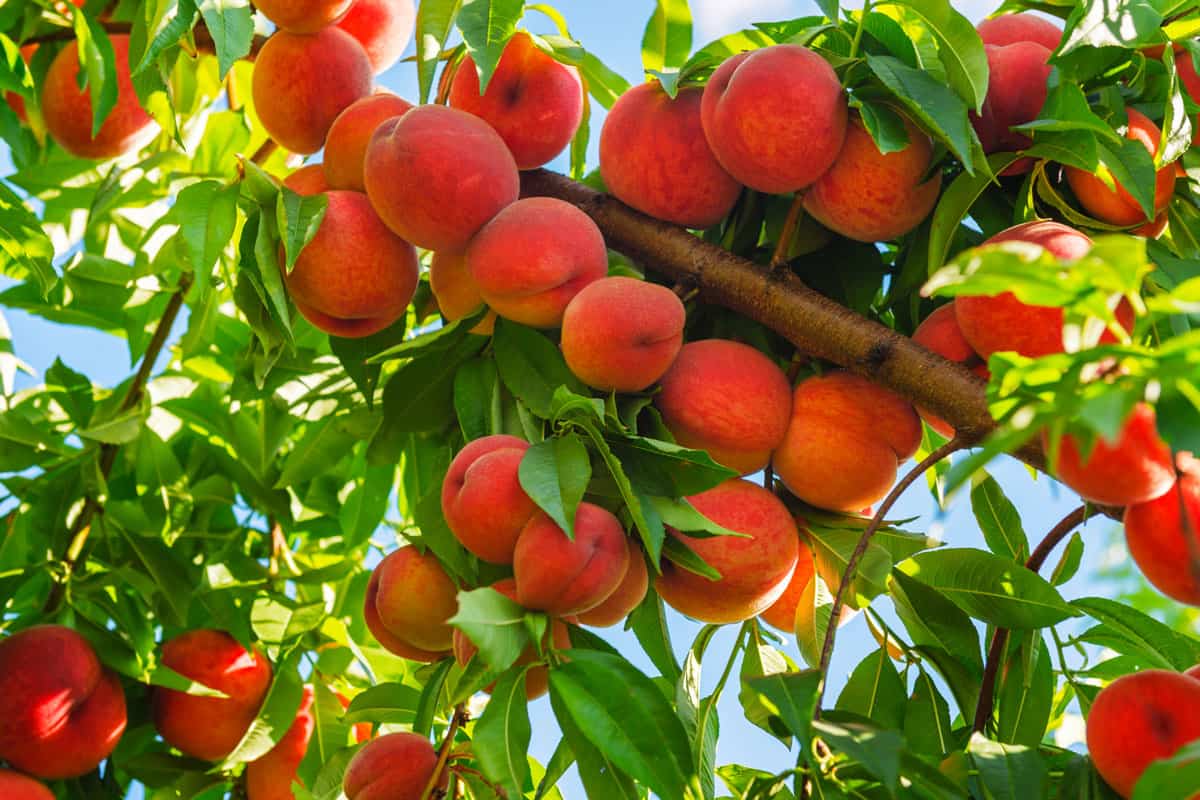
Where Is The Best Place To Plant A Peach Tree?
The best place to plant peach trees depends on several factors. Here are some guidelines to follow:
Climate
Peach trees thrive in regions with temperate winters and long, warm summers. They require specific "chilling hours" below 45°F to set fruit, but they also need warmth for the fruit to ripen. They typically do well in USDA hardiness zones 5 through 9.
Check the chilling hour requirements of the peach variety you plan to plant and make sure your area meets those requirements.
Sun exposure
Choose a location that receives full sunlight throughout the day, including the morning hours, which means at least 6-8 hours of sun per day. Light is important and helps prevent fungal problems.
Soil requirements

- Soil structure: sandy loam or loamy soil with good drainage is ideal. Clay soils can also work well if they are well-drained. Also, the soil should be free of compacted layers, as this can limit root growth and cause poor tree health.
- Soil pH: The ideal soil pH for peach trees is between 6.5 and 7.0. A pH below 6.0 leads to nutrient deficiencies, and a pH above 7.0 can lead to iron deficiency, which can cause leaf yellowing. Still, you can take steps to correct the soil's pH by adding lime if the soil is too acidic or sulfur if it's too alkaline.
- Soil depth: The tree needs at least 2-3 feet of soil depth to allow for proper root development.
- Organic matter: Peach trees require soil rich in organic matter, which improves soil structure and water-holding capacity.
Frost protection
Peach trees flower early in spring yet are susceptible to damage from late frosts. Plant them in a frost-protected spot, such as on a slope or the south side of a building or fence.
Air circulation
This is important to prevent disease. Therefore, avoid planting in low-lying areas where cold air can get trapped.
Spacing
The trees need sufficient space to grow and to keep their distance. Plant them about 15-20 feet apart for standard trees and 10-12 feet for the dwarf varieties.
History of disease
Avoid planting peach trees in locations with a history of peach tree diseases, such as bacterial spots, each leaf curl, or brown rot.
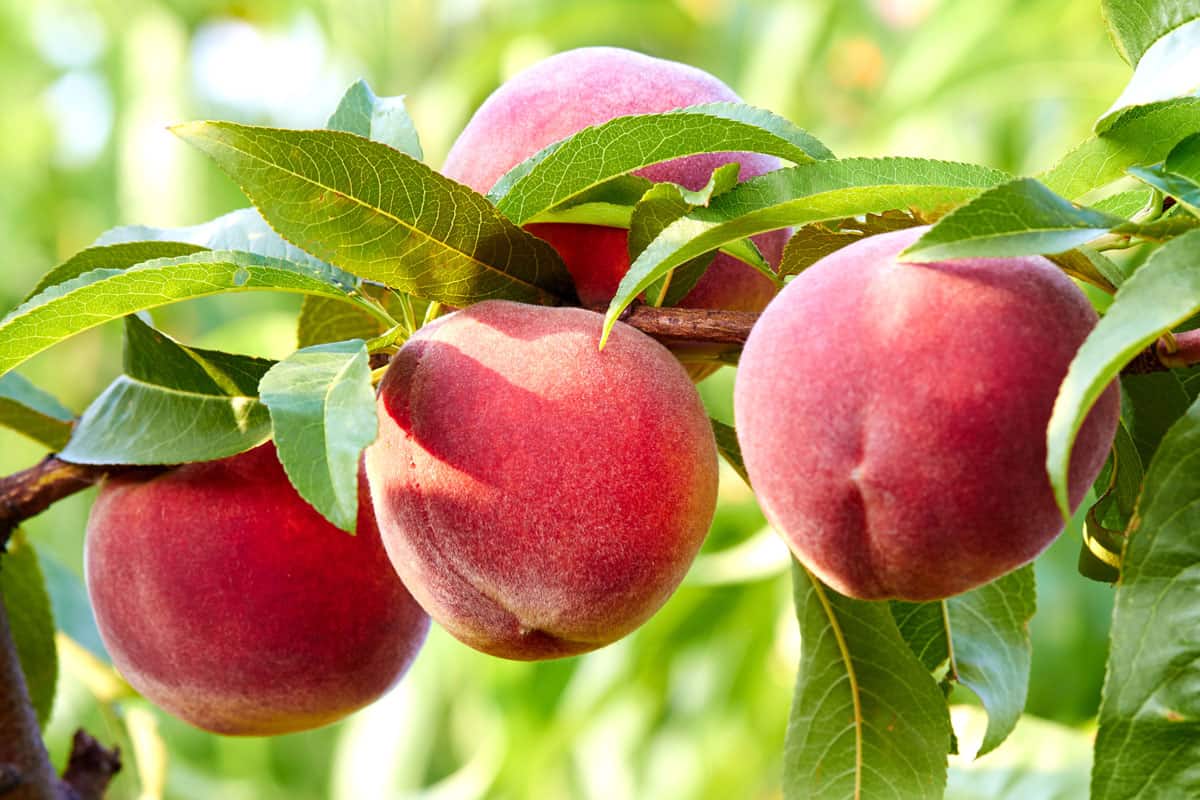
How to Plant A Peach Tree
Proper planting is one of the keys to ensuring the health and productivity of your peach trees. Here are the general steps to follow:
Prepare the soil
Loosen the soil to a depth of at least 18 inches and remove any weeds or grass from the area. You can also enrich the soil with compost or other organic matter to improve its quality.
Choose the tree
Choose a healthy, young peach tree that is at least 1-2 years old. Bare root trees should be planted when they are dormant, while container trees can be planted at any time.
Dig the hole
Dig a hole twice the width and depth of the tree's root ball. Make sure the hole is deep enough to accommodate the entire root system without bending or crowding.
Plant the tree
Carefully place the tree in the hole, making sure the graft connection is at least 2-3 inches above the ground line. Spread out the roots and fill in the hole with soil, tamping it tightly around the tree.
Don't worry if your yard isn't the ideal spot. Peach trees can be very adaptable and respond well to soil amendments such as compost or fertilizer, allowing them to do well even in nutrient-poor soils.
Peach Tree Maintenance
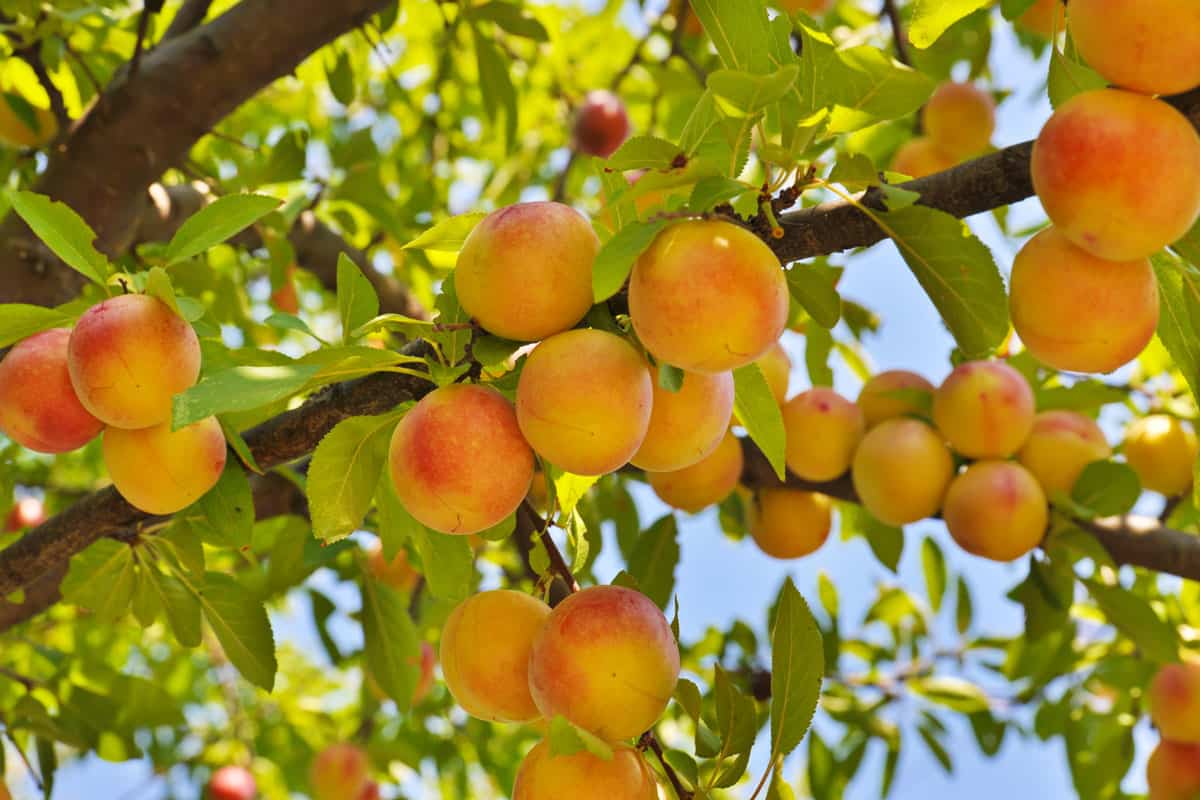
Maintaining peach trees involves several tasks to ensure healthy growth and a good harvest. Here are some of the tips:
Pruning
Prune your peach trees annually during the dormant season to encourage new growth and remove any dead, diseased, or damaged branches. Thin out crowded or crossing branches to allow light and air to reach the center of the tree.
Fertilization
Fertilize in early spring, just as the buds begin to swell, and again in mid-summer after harvest using a balanced fertilizer with equal amounts of nitrogen, phosphorus, and potassium. You can also add organic matter to the soil by adding compost or well-rotted manure.
Watering
For the first few weeks after planting, water the soil every other day or as needed to keep the soil evenly moist but not waterlogged.
After a year, you can gradually reduce the frequency to once a week, depending on the weather conditions. Avoid watering during the hottest part of the day, as this can stress the tree.
Pest and disease control
Monitor your peach trees for signs of insect or disease damage and take prompt action to address any problems. Use an appropriate insecticide or fungicide, but be sure to follow the instructions carefully.
Harvesting
Harvest the fruits in late summer when they are fully ripe, with a good color and a slightly soft texture. Gently twist the fruit to remove it from the tree branch, or better yet, use pruning shears to cut it off.
How Quickly Do Peach Trees Produce Fruit?
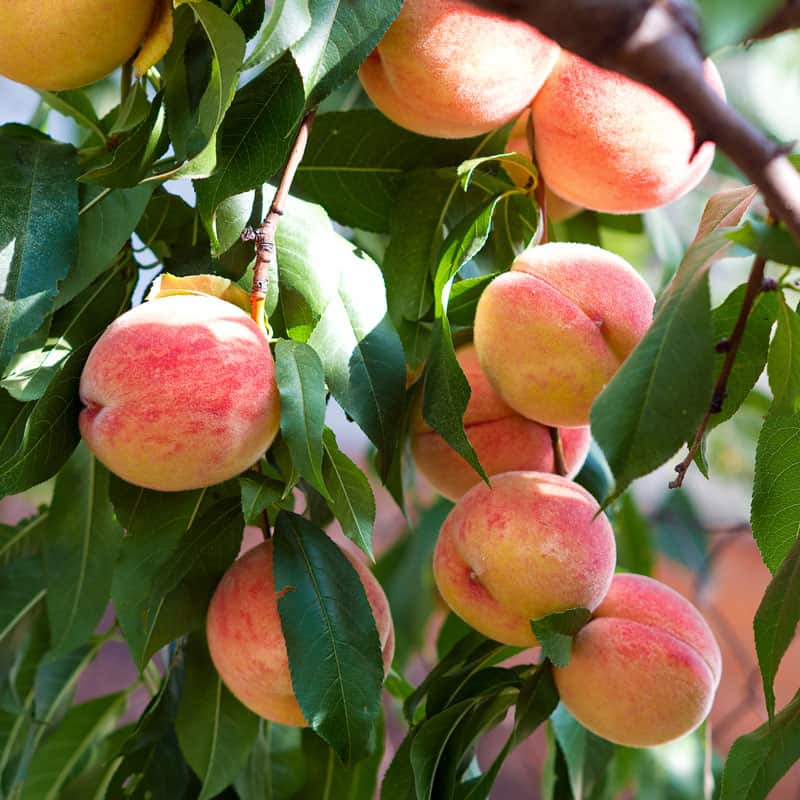
The time it takes for peach trees to produce fruit depends on several factors, including:
Age of the tree and maturity
Typically, a peach tree will produce its first fruit between 2 to 4 years after being planted, but it can take up to 6 years for some varieties.
Young peach trees may produce a small amount of fruit in their second or third year, but this is usually not a full crop. As the tree matures and becomes more established, it will produce larger and more consistent harvests.
Weather conditions, pests, and diseases
These factors can affect the quality and quantity of the fruit. It also depends on how well you look after and maintain your peach trees.
What Is The Lifespan Of A Peach Tree?
The lifespan of a peach tree can vary depending on various factors such as the cultivar, growing conditions, disease, or pest pressure.
In general, peach trees have relatively short lifespans compared. They have a productive lifespan of about 12 to 15 years, but some trees can live as long as 25 years or more with proper care and maintenance.
What Are The Easiest Peach Trees To Grow?
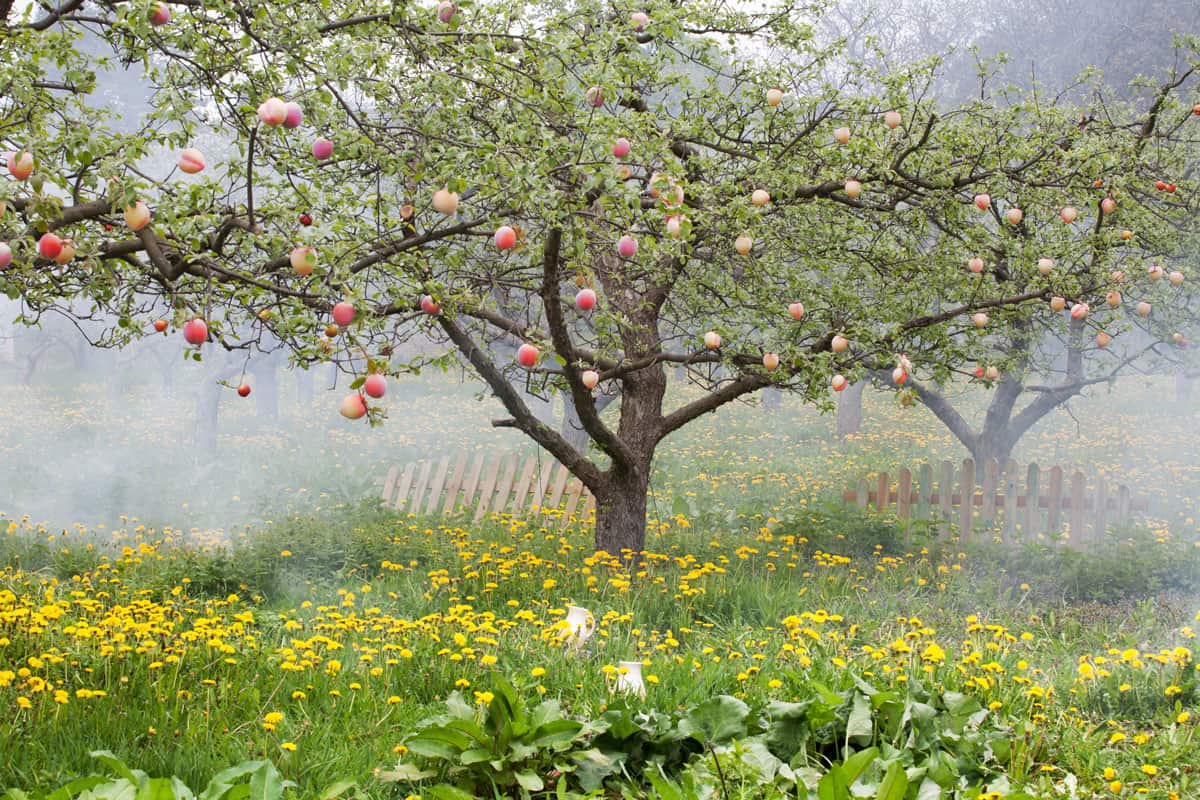
Some peach tree varieties are generally easier to grow than others. Below are a few varieties that are considered relatively easy to grow:
Curlfree
Curlfree was developed to be an easily grown peach tree. It can endure cold temperatures. It is also highly resistant to diseases and pests.
Elberta
This is a popular variety known for its large, juicy fruit and easy-growing nature. It can be adapted to a wide range of growing conditions and is resistant to diseases.
Reliance
This is a newer variety known to be hardy and disease-resistant. It produces medium-sized fruit that is sweet and flavorful.
Redhaven
This is a popular variety known for its juicy, sweet, and flavorful fruit. It is an early-season peach that ripens in mid to late July.
Contender
This is another hardy, disease-resistant variety that is suitable for growing in cooler climates. It produces large, sweet fruits that ripen in mid to late August.
The Takeaway

The best time to plant peach trees is in late winter or the beginning of spring. This can vary depending on factors such as climate, the specific variety of peach trees you are planting, and whether you are planting a container-grown bare-root tree.
It is always a good idea to consult with a local nursery or garden expert to determine the best time to plant peach trees in your area. If you maintain your tree, it will flourish and provide you with tasty fruit.
Before you go, be sure to check out some of our other posts:
